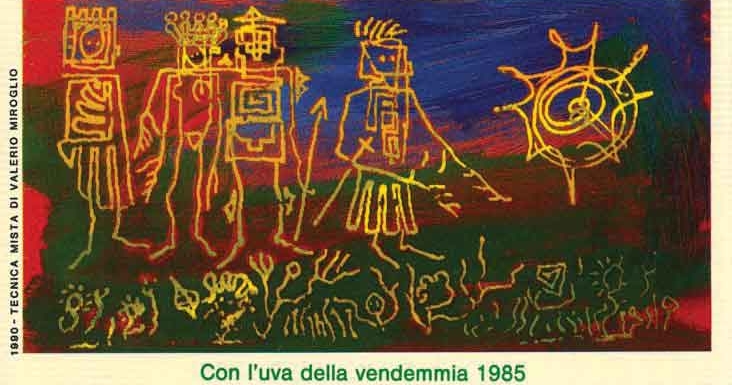Romantic Wine Splurges
Charlie Bucket’s Fizzy Lifting Drink
In my mind, everyone needs a glass of Champagne to lighten the weight of the world. But when it’s time for bivalves and fish eggs (yes, caviar) and the Benjamins are falling out of the wallet, one can do no better than Jacques Selosse from the village of Avize in Champagne. Originally set up in the 1950s, Champagne Jacques Selosse is a highly regarded Champagne house known for utilizing unique methods of production: a solera system more commonly associated with sherry production. In recent years this has been the first sparkling wine house to advocate showcasing the terroir of Champagne. In 1980, Jacques’ son, Anselme, took over the estate and changed the process of making wines, cutting the yields, getting rid of chemicals and focusing on Grand Cru vineyards. In fall of 2010 Selosse released six different single-vineyard wines from villages in the region. Today, the domaine produces nearly 48,000 bottles of superior Champagne every year.
De Beers Diamonds in Burgundy
Usually I am an anything-but-Chardonnay snob, but since this is my dream, let’s do this! Tying in to the holiday love theme is the property of Francois Raveneau. Love rescued Domaine Raveneau in 1956, or at least played a crucial part. Through his marriage to Andrée Dauvissat, René Dauvissat’s sister, Francois Raveneau, managed to entwine two of the most renowned Chablis domaines the world has since come to know. In the process, he gobbled up prime real estate – some vineyards via inheritance, others by capitalizing on cheap land prices in the decades to follow. It was only a matter of time before Raveneau’s growing reputation would attract international interest as the best estate for Premier Cru and Grand Cru Chablis. Not only does the Raveneau family own many of the finest sites in the appellation, but their wines have a steely magnificence that captures the essence of Chablis’ distinctive terroir. Isabelle Raveneau, the current torch holder, says that the secret of these iconic wines is much like what chef would say: if the ingredients are top quality, there is no need for pretense. It’s exactly the same with wine. Many people today say they use something special, such as biodynamics, but there is no secret here. They never go to extremes and have great raw materials.
The Crazy King and Queen of Barolo
Husband-and-wife winemakers Luca and Elena Currado have led the way for their family’s Vietti for the last three decades. Most of Vietti’s wines are made in the village of Castiglione Falletto, built into the hillside beginning in the 1600s. The rooms, tunnels and caverns are an enormous maze of barrique barrels and oak casks. After proving themselves as capable winemakers with the family’s Barbera wines, Luca and Elena were entrusted by his father, Alfredo, with their prized Nebbiolo. Instead of replanting the Nebbiolo in a Grand Cru Barolo vineyard, the ordered Barbera vines – and the resulting Barbera from Scarrone gained acclaim as one of Piedmont’s best showings of the grape.
A Gentle Giant Winemaker
Olivier Humbrecht, France’s first Master of Wine, is the owner and winemaker of Domaine Zind-Humbrecht. The celebrated estate has been in his family since 1620, and today is one of the world’s leading Pinot Gris and Riesling producers. Olivier, who initiated the winery’s transition to organic and biodynamic practices in 1997, was made president in 2018 of Biodyvin, a prestigious biodynamic-certifying body based in Europe. The Clos Jebsal is a single vineyard in Turckheim, located on a steep escarpment and left abandoned until 1982, when Leonard Humbrecht finally managed to reunite all the small parcels and restore the lieu-dit to its entirety. The sweet wines that come from Clos Jebsal are often marked with flinty or smoky aromas, while the expression of fruit linked to the concentration by botrytis is coaxed out with some time in bottle. At least 10 years is recommended to allow for development of the wine’s true expression – pear and apricot laced with yeast, candied grapefruit, caramel and fleur de sel. Liquid love.
Dominio Pingus in Ribera de Duero
Dominio Pingus was established in 1995 by Peter Sisseck, who had already made a name for himself as winemaker at Hacienda Monasterio. He located three separate plots, each containing very old vines of Tinto Fino, and set out to produce an unmistakably Spanish, terroir-driven wine – a garage wine. Peter’s tiny production of fewer than 500 cases comes from ancient, head-pruned Tempranillo vines that have been carefully tended back to health. Pingus is fermented in large wooden vats and, once in cask, mostly left alone. It is largely raised in new barriques, though the flavors of the oak vanish into the enormous concentration. The benchmark for tempranillo, this magical wine balances otherworldly richness with a rare sense of elegance.






